Flowers That Look Like Carnations
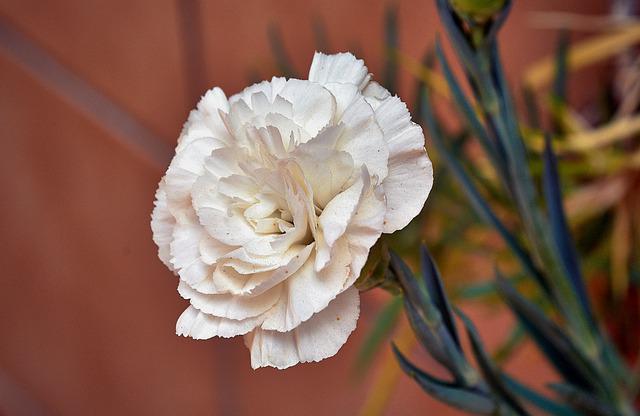
Did you know that there are flowers that look like carnations? Carnations are a perfect choice if you’re looking to add a little romance to your life or want to create a relaxing atmosphere. Flowers that look like carnations are becoming increasingly popular, and there are several reasons for this. Firstly, carnations are a classic flower that is always in style. Secondly, they are relatively easy to grow, and a range of different types of carnations can be grown in any soil type. Finally, they look beautiful when displayed in arrangements or used in bouquets – and they don’t require much maintenance. If you want to add a touch of class to your floral arrangements, consider growing flowers that look like carnations! So why not try some of these flowers in your next bouquet? You won’t be disappointed!
Table of Contents
Dianthus
Dianthus, also known as pinks, are small flowers that resemble carnations. The maximum height of the plant is 18 inches, and the diameter of its flowers never exceeds 1 inch. There will be flowers all over the plant. Pinks get their name from how the petals have been trimmed with pinking shears. Dianthus flowers can be purchased in a wide range of colors. The tips of the petals are frequently dyed with a different hue. Dianthus prefers full sun and slightly acidic soil. Scenting the air with these flowers is like inhaling a blend of spicy and pleasant notes.
Cheddar Pink
Dianthus gratianopolitanus
It gets its common name from its original location, England’s Cheddar Gorge. It is a perennial herb that flows from the end of May into the beginning of June. Full sun and neutral to slightly alkaline soils are ideal for these clove-scented flowers. The afternoon shade is ideal, but it can also handle some morning sun. It can survive in dry conditions for a short time, but prolonged drought requires constant watering. As far as salt tolerance goes, this plant is in the middle.
For a bold splash of color and striking contrast in a rock garden or narrow border, look no further than Dianthus gratianopolitanus. It is attractive when allowed to cascade over the sides of a raised bed, where it can serve as an effective edging plant. Growing the dense mats together could create a fascinating carpet. It is possible to cultivate it in unusual places, such as on stone walls.
China Pink
Dianthus chinensis
China pinks are either biennials or short-lived perennials. Most people grow them annually because they don’t do well in hot, humid summers. They do best in average, well-drained soils that are dry to medium wet and in full sun, but in warmer climates, they do better with afternoon shade. This pink has a lot of flat, heavily fringed flowers with a darker spot in the middle. After they bloom a lot, you should cut off the dead flowers and trim them to get more flowers to grow.
Garden Pinks
Dianthus plumarius
Compact and evergreen Dianthus plumarius is an excellent choice for covering rock gardens, walkways, sloping terrain, and retaining walls. The flowers have a spicy, clove-like aroma and have ruffled, fringed petals in various shades of pink, red, and white. They have a brief flowering period, from May to August.
Plants require full sun and a soil pH between neutral and slightly alkaline. They aren’t drought-resistant but can handle periods without water just fine. They cannot survive in wet, poorly-drained soils because it promotes the growth of disease-causing organisms. Shearing off faded blossoms at the end of a plant’s blooming period is called deadheading. You should divide your plant every two to three years in the spring.
Maiden Pink
Dianthus deltoides
It belongs to the family of carnations, the Caryophyllaceae, and is more commonly known as maiden pink. Even though it originated in Europe and western Asia, the Maiden Pink is now widespread across the upper Midwest and all of Canada, thanks to its introduction. Flowering from May through July, this perennial herb thrives in sunny locations with well-drained soil.
Flowers can be red, pink, lavender, or white with a darker star-shaped ring near the center, making this a versatile plant ideal for use as a groundcover in gardens.
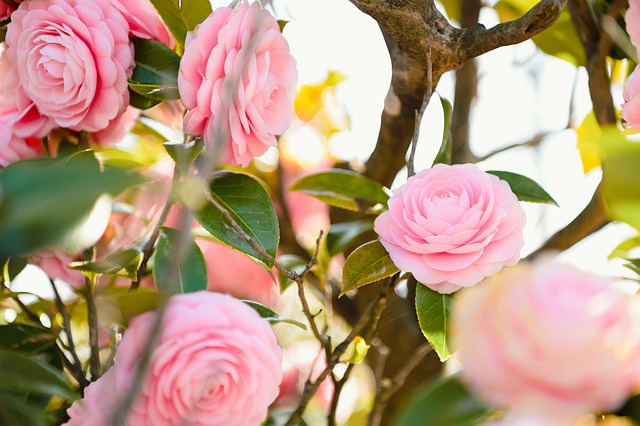
Deptford Pink
Dianthus armeria
It’s a non-native plant that has become a semi-naturalized weed across the United States after escaping cultivation. The name “Deptford Pink” comes from when the plant was widely distributed throughout the area of Deptford, England.
Abandoned fields, roadside ditches, and mowed grass pastures are typical examples of places where this phenomenon occurs. It prefers slightly compacted, heavy, or nutrient-poor soil of any texture (clay, loam, or gravel) and can handle drought but not poor drainage. It can be seen frequently in the mountains and Piedmont of North Carolina but is much rarer near the coast.
In contrast to other members of the genus, these flowers have no discernible aroma. It is usually self-pollinating and rarely visited by insect pollinators. Its ability to thrive in marginal conditions has led to its widespread distribution in naturalized settings but is more ideal. It struggles to outcompete other broadleaf perennials.
Fringed Pink
Dianthus superbus
The correct name for this beautiful flower is “strongly fragrant,” It produces flowers with feathery petals and a soft, pale rose-lilac hue. It is an excellent fragrant specimen plant for the edge of a border or a rock garden. It thrives at high altitudes of up to 2,400 meters in the southern part of its range.
Seguier’s Pink
Dianthus seguieri
They’re related to carnations, and they live for years without dying. Seguier’s Pinks, like carnations, have frilly blooms in the middle of summer. Blooming successfully with this species requires at least six hours of daily direct sunlight and the use of organic fertilizers. When spent flowers are removed, also known as “deadheading,” flower production is prioritized over seed production.
While carnations are best grown in warmer climates, Seguier’s pinks thrive in USDA zones 4 through 9. Seguier’s Pinks require consistent, deep watering for the first two years of their lives while their root systems develop. An inch of water per week is ideal, though any more can lead to root rot.
Carthusian Pink
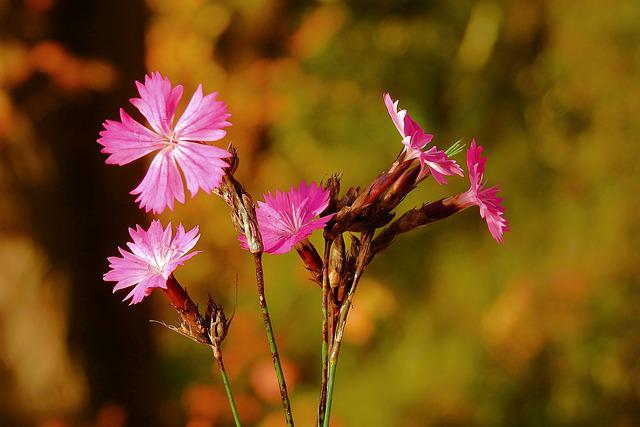
Dianthus carthusianorum
It is an evergreen perennial that can range in height from 50 cm to over a meter and has both sprawling and upright stems that grow from a woody base. The leaves are long and narrow, a dark green color, and they grow in dense and numerous groups at the plant’s base. Numerous flowers emerge from leathery bracts in terminal clusters. Throughout the summer, a reddish magenta coloration is typical.
Sweet Williams
Dianthus barbatus
Sweet William, or Dianthus barbatus, is a short-lived or biennial plant that is often grown annually. It does well in sandy, slightly alkaline soil, in full sun or partial shade, and places with hot summers. The flowers grow in clusters that are round and full. The colors range from white to bright red and purple, often two colors. There are a lot of different cultivars, some of which have double flowers or are small. The name “barbatus” comes from the growths on the petals that look like barbs or beards.
It can get crown rot and rust, especially in soils that don’t drain well. snails and slugs can be a problem, especially in shady places. This plant is poisonous, but only if you eat it. It also causes mild skin irritation that lasts only a few minutes.
Catchfly
Silene dioica
It can be either a biennial or perennial, depending on where you live, and its flowers are from deep pink to deep red, each about 1.8–2.5 centimeters across. The five petals have a deep notch at the tip and taper to a point at the base before they merge into the urn-shaped calyx. By their very names, we know that these flowers are dioecious, meaning that male and female flowers develop on different plants. Male flowers have 10 stamens and a calyx with 10 lobes, while female flowers have 5 styles and a calyx with 20 lobes. The fruit is an oblong capsule that opens at the apex by 10 teeth that curve back, and it bears fruit starting in July. There is no aroma from the blossoms. Flies are a common sight among the blossoms from May through October.
Bladder Campion
Silene vulgaris
This perennial wildflower is easy to spot because its green calyx looks like a bladder and has purple veins. The white flowers at the end of the bladder look rough and have five petals with two lobes. They are about 2 cm wide and have long stamens that stick out. People say that they smell a bit like cloves. One plant that is about knee-high has many flower heads. On mature plants, the leaves are long and thin and have a bluish-green color.
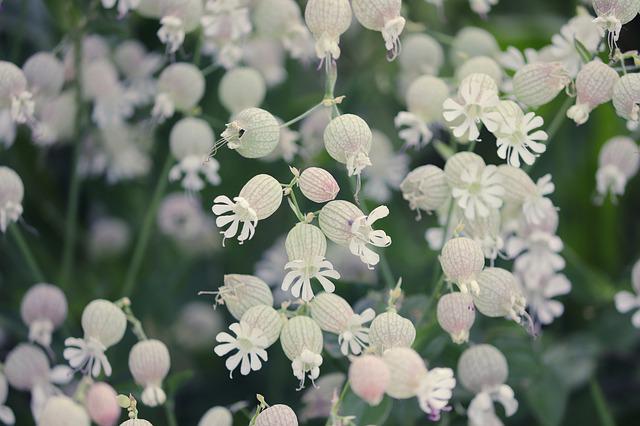
Rose Campion
Lychnis coronaria
Silene dioica are perennial herbs that grow in Europe. Like carnations, red campions have bright flowers that look like stars and bloom from late spring to early summer. But you can still enjoy their green and white-striped leaves when they aren’t blooming. Most flowers, carnations, and red campions need at least 6 hours of full sun. Silene dioica are perennial herbs that grow in Europe. Like carnations, red campions have bright flowers that look like stars and bloom from late spring to early summer. But you can still enjoy their green and white-striped leaves when they aren’t blooming. Most flowers, carnations, and red campions need at least 6 hours of full sun.
Red Campion
Silene dioica
Another type of red flower that can be found growing in North America, this one is also a biennial. It has clusters of tubular flowers measuring about 1.5 centimeters across with crimson-colored petals and a long style that curves back to touch the base of the pistil. The plant is hardy to USDA zones 5 through 8 but may not survive frost if overwatered or if temperatures drop below 0°F.
Chickweed
Stellaria media
It is an annual plant that grows in cool weather. It has small, succulent leaves and tiny white flowers. This plant is evergreen and lives for more than one year in warmer areas. It has weak, thin stems that can grow up to 40 cm tall (16 inches). There are few hairs on plants. The stem of Stellaria media has one line of fine hairs. The leaves are oval and opposite, with stalks on the lower ones. Flowers are small, white, and have five petals with very deep lobes. Some plants have no petals. Most flowers have three styles and three stamens. The flowers make pods quickly. Flowers and capsules can be on the same plant at the same time.
Baby’s Breath
Gypsophila
There are over a hundred species in this genus, both annuals and perennials, and they all look different. Some of them spread by underground stems, creating a carpet of colorful flowers on the ground. On the other hand, some form compact, upright mounds; their long, thin stems branch out extensively to create a flimsy impression of lightness. Their narrow, small leaves range in color from a bluish gray to a greenish gray. Small, five-petaled, white or pink flowers bloom on baby’s breath plants throughout the summer. Butterflies and other pollinators love to visit the flowers. Once the threat of frost has passed in the spring, that is the time to plant a baby’s breath. It’s easy to keep up with the plants’ rapid expansion.
Oleander
Nerium oleander
Oleander is a member of the lily family and grows as an upright shrub or small tree. The leaves are alternately arranged, simple, ovate, with serrated margins, and can grow up to 10 inches long (25 cm). The flowers are white, with five petals that taper to a point. They bloom in late winter or early spring, and clusters of fruits form on the trees. Oleander can be invasive when not cultivated properly, so it’s important to know what kind of oleander you have before planting it in your garden.
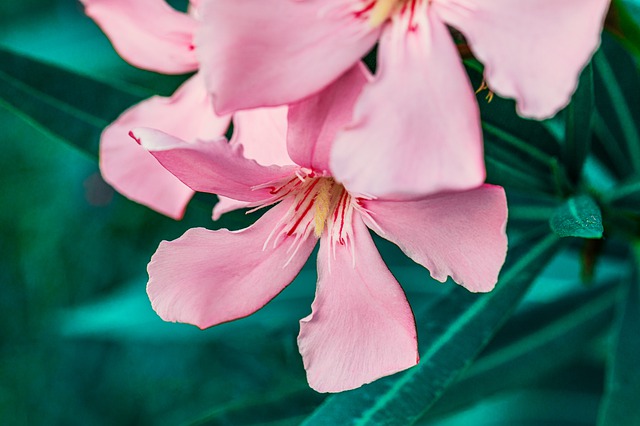
Hosta ‘Blue Mouse Ears’
Herbaceous perennial Hosta ‘Blue Mouse Ears’ was named after Nicolaus Thomas Host, an Austrian physician, and botanist from the 19th century. Leaves of a blue-green to the gray-green range have a distinctive heart shape and are curled to resemble mouse ears, forming a symmetrical, ornamental mound on the plant. Japan, Korea, China, and eastern Russia are the original homes of this genus.
The native habitat of hostas includes woods and glades. This means that ‘Blue Mouse Ears’ is an excellent choice for a pollinator or shade garden and an Asian or cottage garden. Growing it in a pot is an option as well. Its miniature size, heart-shaped leaves, and vibrant coloration make a striking addition to any garden. When planted in large enough quantities, it can hide the browning of bulb foliage.
Foxgloves
Digitalis purpurea
Foxglove comes from Europe, and its big, tall flowers come in many colors. It is like moist, well-drained soil and full of organic matter. You shouldn’t let the soil dry out. The best thing for foxglove is shade in the afternoon. It only has a rosette of leaves for the first year because it only lives for two years. In the second year, a tall spike with beautiful blooms grows from a densely packed raceme on one side. Remove spent flowers on keeping the number of seedlings from getting too high, but let some flowers go to seed to keep a permanent planting as if they were perennials. Use to give the perennial flower bed a bit of height. They look nice in front of walls and bushes and large groups.
Ragged Robin
Silene flos-cuculi
Ragged Robin likes disturbed ground, preferably areas that have been burned. The stems may be soft or spongy under your fingers, giving them a touch of instability. Ragged Robins are deer resistant, so they can live in areas without much cover other than shade during hot weather. They like full sunlight to partial shade but will tolerate some drought once established. They are native to North America. Ragged Robins can also be propagated from root cuttings taken in autumn or early winter.
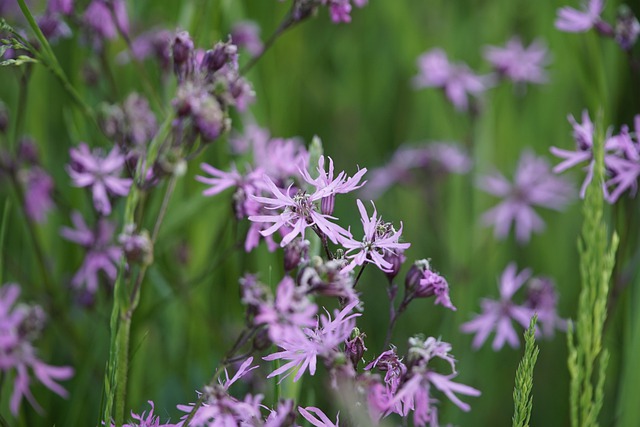
Sandwort
Arena spp.
It grows to be six inches tall and about 12 inches wide. It has one-inch white flowers that cover the plants all spring long. It grows in USDA zones 4 to 7 and has tiny, elliptical leaves.
Mountain sandwort is mostly used as a small groundcover in rock gardens or as edging along paths. Outside Pride is a good place to order seeds online if you can’t find mountain sandwort at your local nursery.
Lily of the Valley
Convallaria majalis
It is a gorgeous flower that can be found growing wild in temperate regions all over the world. It usually has three petals and grows up to 2 feet tall. The leaves are oval with serrated edges and grow from a bulb. Lily of the Valley likes moist soil but will do well in other soils as long as they have good drainage. You can propagate lilies from cuttings taken in late winter or early spring, but it’s best to start with root divisions instead, so you get more plants per division.
Jersey Lily
Amaryllis belladonna
Belladonna lily is an African flowering bulb in the amaryllis family called Amaryllidaceae. It blooms in the summer. On “naked stems,” clusters of pretty, fragrant pink flowers grow, followed by strap-like leaves.
This bulb will do better in the ground in the fall than in a pot. It also likes to be in the sun more than in the shade. Plant bulbs 6 to 12 inches apart, or 1 to 2 bulbs per square foot, with just the tip showing or barely covered. The plant doesn’t like to be split up, so if it is, it might not grow well for a few years. It does well when moved, and the best time to move it is in the fall after it blooms and the leaves start to grow.
Mountain Laurel
Kalmia latifolia
Mountain Laurel grows in shady areas near streams and high altitudes. The leaves are oval-shaped with a pointy end, and the flowers are pink or purple. Mountain laurel is hard to kill, so it thrives in poor soil conditions. It needs well-drained soil that contains some organic matter but doesn’t overwater because this plant likes its roots dry. Move mountain laurels when they become overcrowded; they will reseed themselves aggressively if left alone.
Snow-in-Summer
Cerastium tomentosum
Snow-in-summer is a perennial plant that grows slowly and forms a 6 “Tall mat of narrow, pretty leaves. Underground runners will do the spreading. In late spring and early summer, stems with white flowers in the shape of stars will stick out 8–12 inches “above the mat used to cover the ground. There can be up to 15 flowers on each stem. The many white blooms look like a snowy carpet, which is how it got its common name.
The plant will send out its seeds if the spent flowers are not taken off. Every few years, usually in the spring or fall, divide. Cuttings can also be used to spread a plant in early summer. You shouldn’t prune in the fall. Instead, you should wait until spring.
Corncockle
Agrostemma githago
Corn Cockle is an annual plant and weed that is native to Europe. It has naturalized in most of the United States and can be found in all parts of North Carolina, mostly in places that have been disturbed, like meadows and fields. The stems are hairy and have two narrow leaves on each side. The flowers have five petals ranging from pink to purple and bloom all summer long.
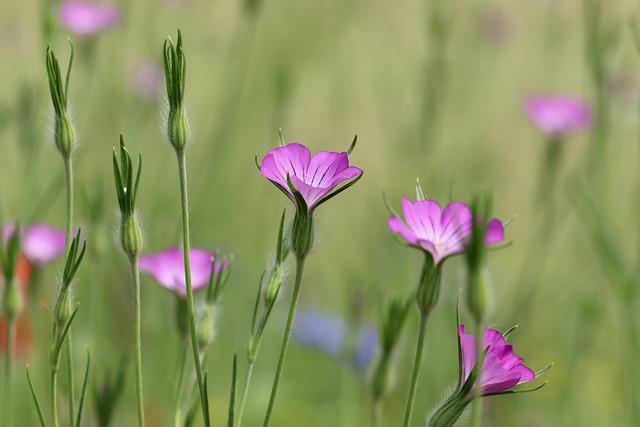
Double Hollyhocks
Alcea rosea
Double hollyhocks, a perennial favorite, are a great way to give your summer garden some extra height and color. From midsummer into early fall, sturdy spikes reaching 4 to 6 feet bear showy, double flowers with delicate ruffles. As a result of the flowers, more butterflies are visiting the garden. Hollyhocks are a beautiful addition to cottage gardens and backyard borders. Their tall stature is an option to grow them up against walls or fences. Our Double Hollyhocks bloom in a rainbow of colors, from pale pink to deep red to yellow and cream. This perennial can withstand browsing by deer but thrives in bright sunlight. Zones 3-8.
